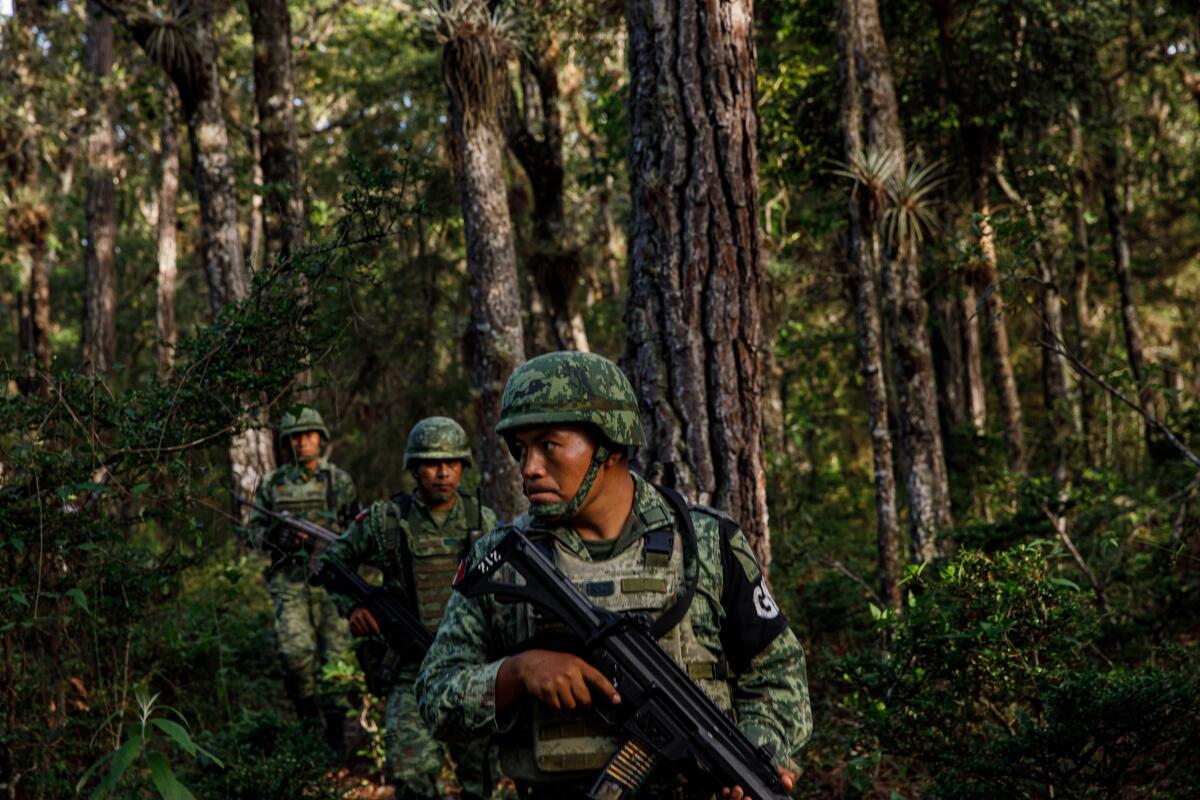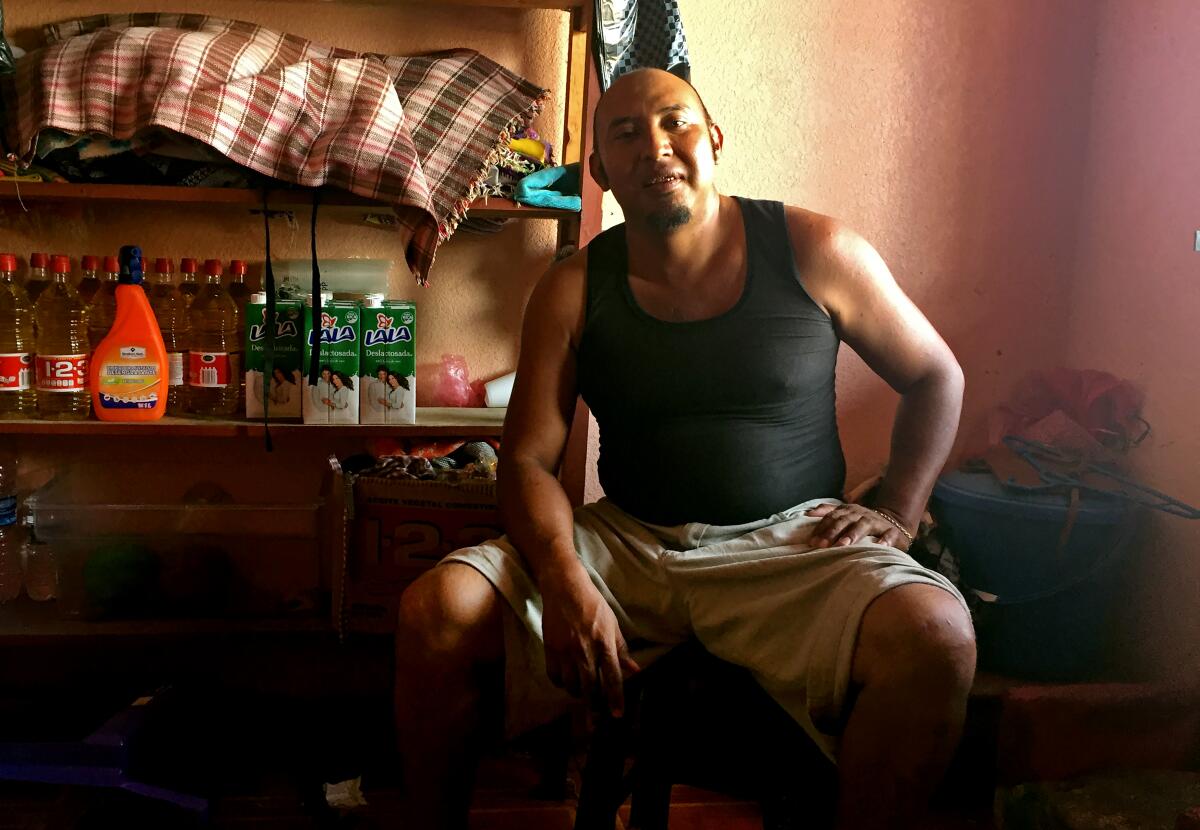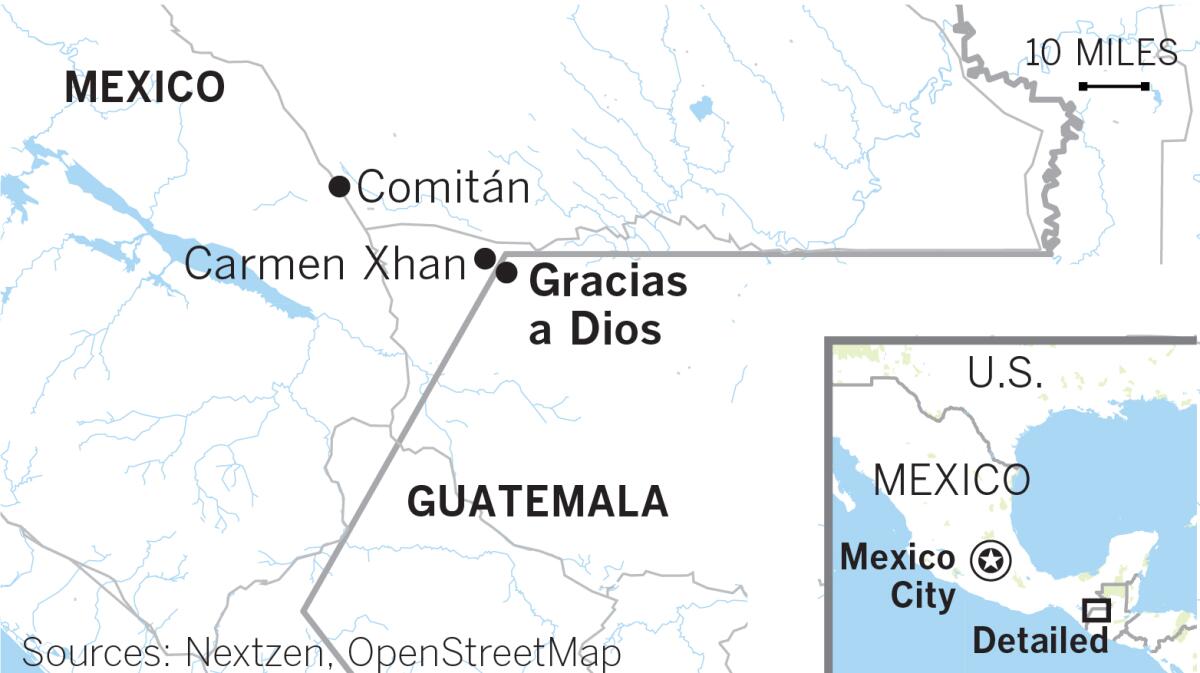In a town called ‘Thank God,’ Central Americans’ pursuit of the promised land fades

GRACIAS A DIOS, Guatemala — Just a few months ago, buses from across Guatemala would arrive each day in this border town and deposit families with their bags and backpacks, all planning to cross the nearby border into Mexico on their way to the United States.
Hotels and discreet safe houses were packed. The small plaza outside the ocher-colored Roman Catholic church was a major gathering point for the newcomers.
These days, however, Gracias a Dios — whose name translates to “Thank God” — feels like a ghost town.
“Business is way down for everyone,” said Marvin Hernandez Jorge, the mayor and owner of the Azteca restaurant, which once bustled with customers but now is usually near empty. “The migrants used to help the economy a lot.”
“Everyone ate here after they arrived. But they are no longer coming,” he said. “That has hurt the hotels, the restaurants, the shops. Everyone has lost out.”

The steady flow of migrant families has been replaced by a trickle of young men accompanied by coyotes, or smugglers, who guide them on what has become an increasingly difficult passage north.
Just a few blocks away in the Mexican town of Carmen Xhan, a Mexican national guard detachment makes its rounds. The patrols began in June, after President Trump used threats of tariffs to compel Mexico to crack down on Central Americans trying to reach the U.S.
There is no formal border crossing here, no river or fence or wall separating Guatemala and Mexico, just a line of white stone obelisks marking the boundary.
Fields of corn and beans in Guatemala merge with hillsides where cattle graze in Mexico. People drive from one country to another without passing any immigration or customs inspection.
That fact has long made Gracias a Dios a notorious smuggling hub. Cars and trucks full of migrants would head north into Mexico on an almost daily basis.
No more. National guard units, accompanied by police and Mexican immigration agents, now staff checkpoints along the main highway to the city of Comitan, 35 miles north of the border.
The military contingents, decked out in fatigues, ballistic vests, helmets and assault rifles, are an imposing presence.
The Mexican strategy is not to stop migrants at the largely unguarded 600-mile border with Guatemala, much of it in remote terrain. Mexico lacks the personnel and infrastructure for such a massive undertaking.
Rather, the aim is to intercept migrants along the major northbound roads, and to discourage others from attempting the trip.
As a result, fewer people appear to be making the journey.
In July, U.S. immigration authorities on the Southwest border apprehended or turned away 82,000 foreigners — down from a 13-year high of 144,000 in May.
Public buses and vans making their way north from the Guatemalan border are methodically stopped and subjected to immigration inspections, as are all passing cars and trucks.
“It’s a lot different now — people here respect us a lot more now,” said Jose Armando Ramos Hernandez, a 10-year veteran of the National Immigration Institute, Mexico’s immigration enforcement agency. “Before, we used to receive threats. Now with the National Guard, everyone stops, no one threatens us.”

On a recent morning at the checkpoint, Ramos pulled two 17-year-olds off a northbound bus. Both boys presented Mexican birth certificates. But Ramos was suspicious: They spoke Spanish with the lilting country accents of Guatemala’s northwest highlands.
Under questioning, Ramos said, the two eventually admitted they were Guatemalans and had purchased the birth certificates for about $300 each in Comitan, where there is now a brisk trade in such documents.
The two boys were loaded into a white Chevrolet van with gated windows and processed for deportation.
Migrants who now chance the crossing typically get out of vehicles before checkpoints and try to walk around them on dirt trails.
“Some chapines just went by!” one Mexican woman, using a common nickname for Guatemalans, recently told a group of journalists trudging along a back path.
The troops now also mount foot patrols along mountain trails, hiking deep into cool, high-altitude pine forests outside of Comitan. The soldiers find empty water bottles, discarded food packaging, abandoned campsites and other indications that people have been there. The migrants have usually moved on.
“Unfortunately, the coyotes know our every move,” said Lt. Alejandro Romero, a 20-year Mexican army veteran who was heading a national guard detachment at the checkpoint outside Comitan.
Many residents are themselves from families in the smuggling business, and they use walkie-talkies to send warnings when troops are near. Still, only a limited number of migrants can hike around the checkpoints.
“The main roads are secure,” Romero said, “and that means it is very hard for large groups to get through.”
How long that will continue remains unclear.
Mexican President Andres Manuel Lopez Obrador — who took office last December vowing to provide refuge and jobs for Central Americans — has been facing growing criticism at home that the crackdown amounts to doing the Trump administration’s dirty work. Catholic bishops in particular have accused Lopez Obrador of constructing a virtual wall along the border with Guatemala.
In Gracias a Dios one recent afternoon, there was hardly a soul on the street. Hotels and shops were mostly deserted.
“It used to be very lively here,” said Hernandez, the mayor. Wearing a tank top and shorts and seated in a storage room inside his desultory restaurant, he flashed a wry smile that showed gold dental bridgework. “Now the streets are empty. Very few people are trying to cross. I would say my business is down 70%. I think the coyotes are all taking a break.”
Hernandez, 39, said he had been an undocumented worker in South Carolina and Virginia, spending five years as a cook before deciding to return to his hometown in 2011 with savings of about $60,000.
He used the money to build a house and open his restaurant, get married and start a family.
“I had my American dream, I’m happy here now, but I understand that others are looking for the same thing,” he said. “Here, you work all day, in the fields or in construction, and you earn maybe $3 a day. Imagine that! Of course people want to leave.”
He predicts that U.S. pressure on Mexico to reduce migration will subside and that Mexican troops will withdraw from their checkpoints by the end of the year, opening the way to those who hope to move north.
“In six months, it will all begin again,” he said. “Gracias a Dios will be back to normal.”
Special correspondents Liliana Nieto del Rio in Gracias a Dios and Cecilia Sanchez in Mexico City contributed to this report.
More to Read
Sign up for Essential California
The most important California stories and recommendations in your inbox every morning.
You may occasionally receive promotional content from the Los Angeles Times.










